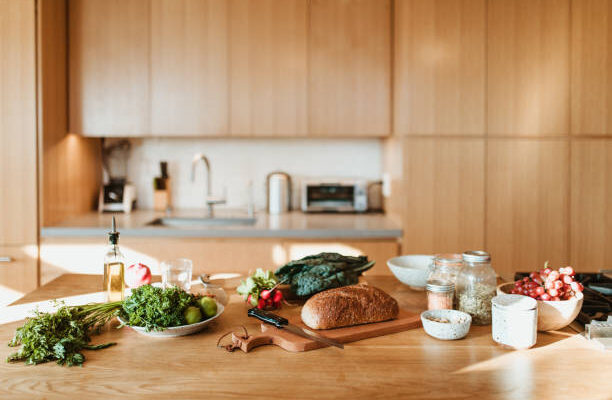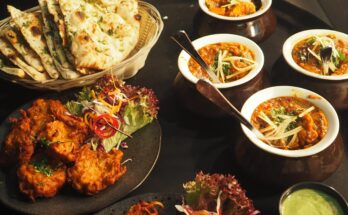In the realm of cooking, basic ingredients are the cornerstone of creativity. These humble components, found in every kitchen, are the building blocks of countless dishes and cuisines worldwide. From flour and eggs to vegetables and spices, mastering the art of utilizing basic ingredients can transform even the most modest pantry into a source of culinary inspiration.
In this article, we’ll explore the art of harnessing the potential of basic ingredients to create delicious and satisfying meals. Whether you’re a novice in the kitchen or an experienced home cook, you’ll discover tips, tricks, and ideas that will enhance your cooking repertoire and inspire your culinary journey.
Flour: The Versatile Foundation
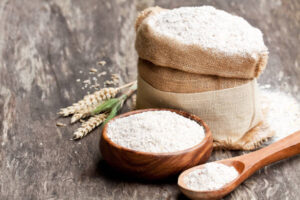 (Photo from iStock)
(Photo from iStock)
Flour is the cornerstone of many dishes, and it comes in various forms, including all-purpose, bread, whole wheat. Likewise, specialty flours like almond or coconut. Here’s how to make the most of this versatile ingredient:
- Baking: Flour is the primary ingredient in baking, used to make bread, cakes, cookies, and more. Experiment with different types of flour for unique textures and flavors in your baked goods.
- Thickening: Flour serves as an excellent thickening agent for soups, stews, and sauces. Create a roux by mixing flour and fat (butter or oil) to achieve the desired consistency in your dishes.
- Breading: Coat proteins like chicken or fish with flour before frying to achieve a crispy exterior. You can season the flour with herbs and spices for added flavour.
- Pasta: Homemade pasta is a delightful culinary endeavour. Combine flour and eggs to make fresh pasta dough and experiment with various shapes and sizes.
Eggs: Nature’s Perfect Protein
 (Photo from iStock)
(Photo from iStock)
- Eggs are not only a protein powerhouse but also a binding and leavening agent in many recipes. Here are some ways to harness their potential:
- Baking: Eggs provide structure and moisture to baked goods. They can be used for leavening, creating a tender crumb, or adding richness to desserts.
- Binding: Eggs are the glue that holds ingredients together in dishes like meatloaf, meatballs, and veggie burgers. They’re also essential for binding ingredients in casseroles and frittatas.
- Breakfast Classics: Eggs are incredibly versatile for breakfast. Make omelettes, scrambled eggs, poached eggs, or sunny-side-up eggs with various toppings and seasonings.
Homemade Mayonnaise: Whisk egg yolks with mustard, vinegar, and oil to create your own creamy mayonnaise.
Vegetables: Nature’s Bounty
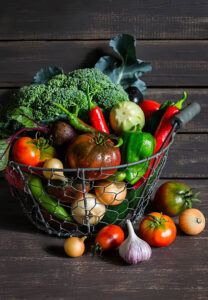 (Photo from iStock)
(Photo from iStock)
Vegetables are a colourful and nutritious canvas for culinary creativity. Whether fresh, frozen, or canned, here’s how to utilize them effectively:
- Roasting: Roasting vegetables enhances their natural sweetness and imparts a delightful caramelized flavor. Try roasting carrots, broccoli, or Brussels sprouts with olive oil, salt, and pepper.
- Stir-Frying: Quickly cook vegetables in a hot pan with some oil and your choice of seasonings for a simple and healthy side dish or main course.
- Soups and Stews: Vegetables are essential in hearty soups and stews. Create a base with onions, carrots, and celery, then add your choice of ingredients like beans, potatoes, or greens.
- Salads: Fresh vegetables make for vibrant salads. Combine various veggies, leafy greens, proteins, and dressings to create a wide range of salads.
Protein: The Heart of Every Meal
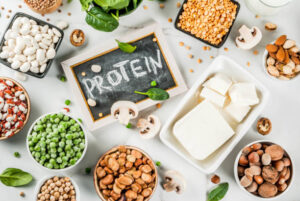 (Photo from iStock)
(Photo from iStock)
Proteins like meat, poultry, fish, tofu, and legumes provide sustenance and flavour to your dishes. Here’s how to make the most of them:
- Marinating: Marinating proteins in a flavourful mixture of herbs, spices, oils, and acids (like vinegar or citrus juice) infuses them with taste and tenderness.
- Grilling: Grilling proteins can impart a smoky and charred flavour. Experiment with different marinades and sauces to enhance the taste.
- Slow Cooking: Tough cuts of meat become tender and flavourful when slow-cooked. Use a crockpot or Dutch oven to create mouth-watering dishes like pulled pork or beef stew.
Vegetarian Options: Plant-based proteins like tofu, tempeh, and legumes are excellent meat substitutes. Additionally, explore recipes like chickpea curry, tofu stir-fry, or lentil burgers.
Spices and Herbs: The Flavour Enhancers
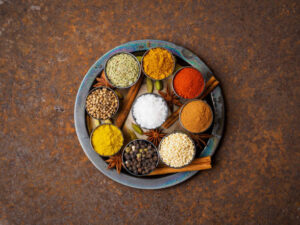 (Photo from iStock)
(Photo from iStock)
Spices and herbs are the secret ingredients that can elevate your dishes from ordinary to extraordinary. Here’s how to use them effectively:
- Flavour Combinations: Learn about flavour profiles and how to pair spices and herbs to create balanced and harmonious dishes. For example, basil and tomatoes, rosemary and lamb, or cumin and coriander in Indian cuisine.
- Fresh vs. Dried: While fresh herbs provide brightness, dried spices offer concentrated flavors. Experiment with both to discover their unique contributions.
- Toasting Spices: Toasting spices in a dry pan before using them can intensify their flavors. Be cautious not to burn them.
- Infused Oils and Vinegars: Create your own flavoured oils and vinegars by infusing them with herbs, spices, or citrus zest. These can add depth to dressings and marinades.
Dairy and Dairy Alternatives: Creamy Indulgences
 (Photo from iStock)
(Photo from iStock)
Dairy products like milk, cream, cheese, and yogurt are luscious additions to many recipes. Furthermore, if you’re dairy-free, there are also excellent alternatives available:
- Creamy Sauces: Cream and cheese are the foundation of rich and creamy sauces, like Alfredo or macaroni and cheese. Experiment with dairy-free options like coconut milk or cashew cream.
- Yogurt: Yogurt can be used in both sweet and savoury dishes. It’s a fantastic addition to marinades, dressings, smoothies, and desserts.
- Butter Substitutes: When a recipe calls for butter, try using olive oil, coconut oil, or vegan butter alternatives for a different flavour profile.
Leftovers: Creative Second Acts
 (Photo from iStock)
(Photo from iStock)
Don’t underestimate the power of leftovers. Eventually, with a little creativity, you can transform yesterday’s meal altogether into something entirely new:
- Stir-Fry: Leftover cooked proteins and vegetables can become a quick and satisfying stir-fry. Add some soy sauce and your favorite spices for flavour.
- Sandwiches and Wraps: Use yesterday’s roast chicken or grilled vegetables to create a delicious sandwich or wrap. Add some fresh greens and condiments for a different twist.
- Frittatas and Quiches: Leftover vegetables and meats can be incorporated into frittatas or quiches for a savoury breakfast or brunch option.
- Soups and Casseroles: Combine leftover meats, vegetables, and grains to make hearty soups or casseroles. These dishes are perfect for freezing and reheating.
Conclusion
Utilizing basic ingredients is a fundamental skill that empowers home cooks to create a diverse array of delicious dishes. Although from flour and eggs to vegetables, spices, and pantry staples, each ingredient has its unique role in the culinary world. By exploring different cooking techniques, flavour combinations. Another way is creative uses for leftovers, you can transform your kitchen into a haven of culinary inspiration. So, roll up your sleeves, sharpen your knives, and embark on a delicious journey of culinary creativity generally using your basic ingredients.
Reference:
Slurrp
Want to do a meal prep, what are you waiting, go check some amazing ideas for meal prepping, click on the link below:
How to do your meal prepping routine

